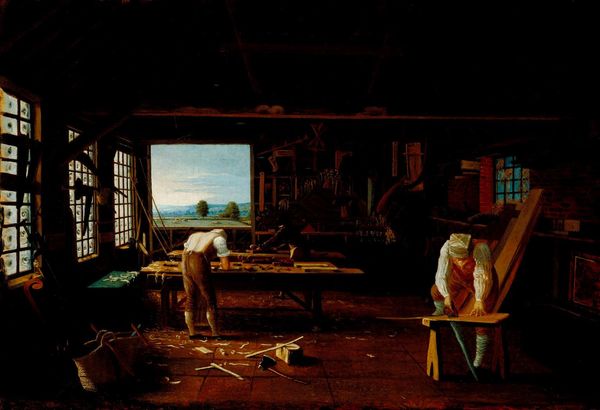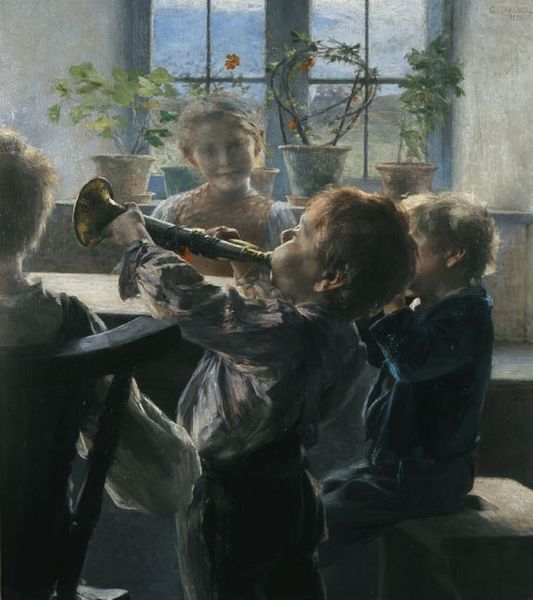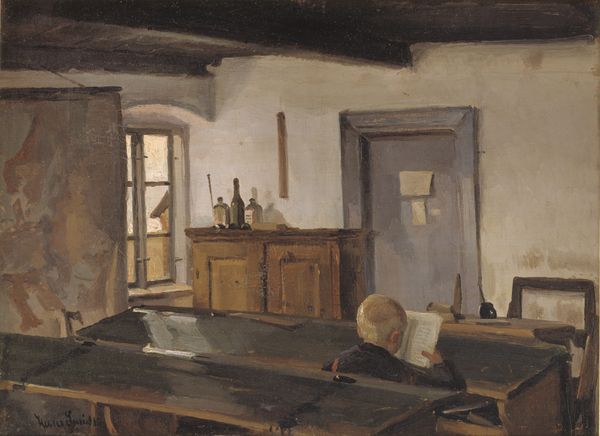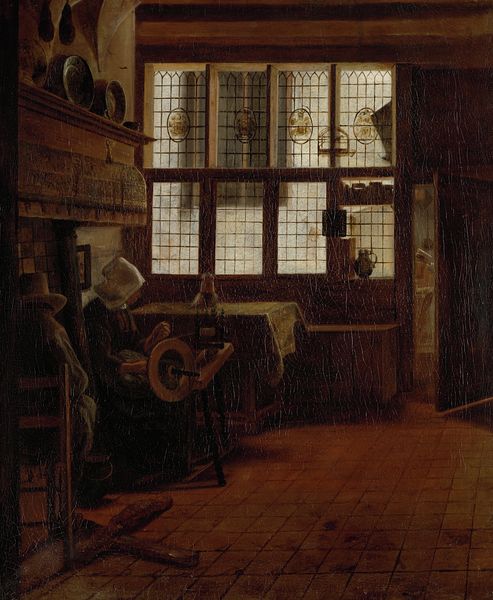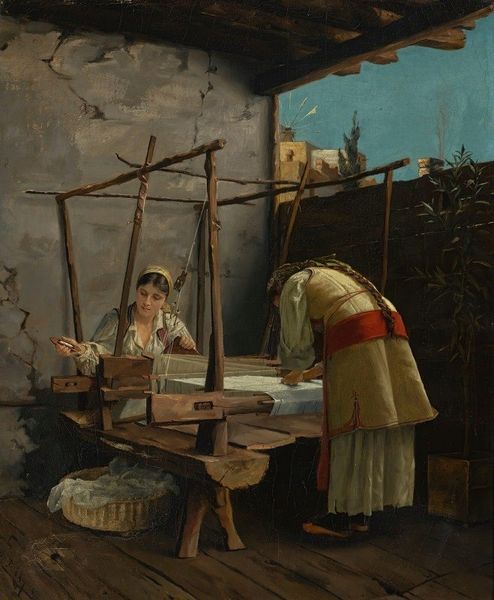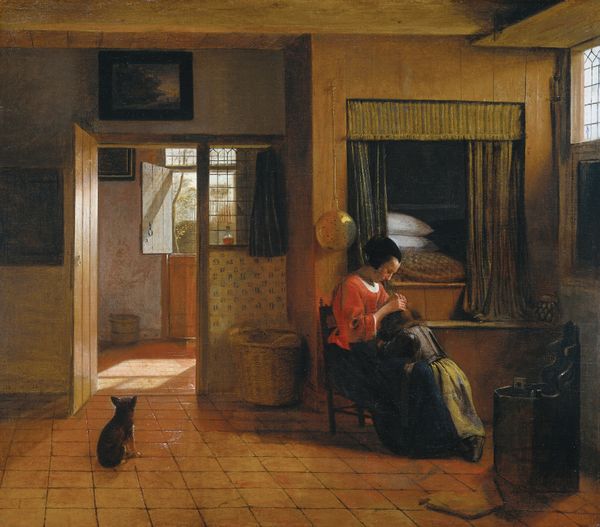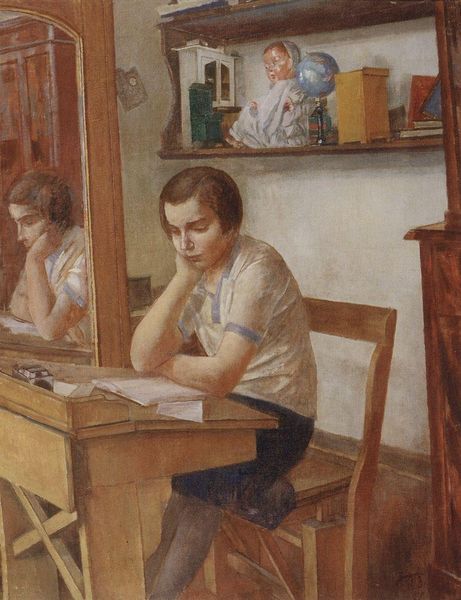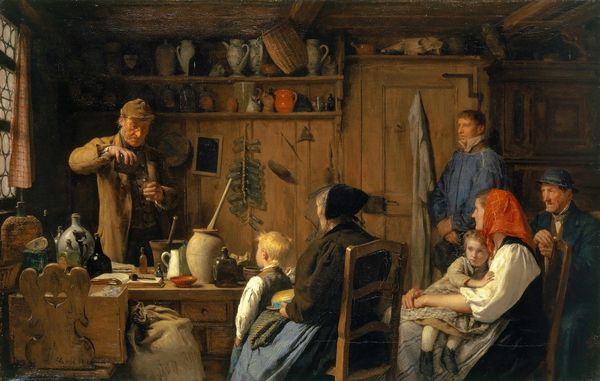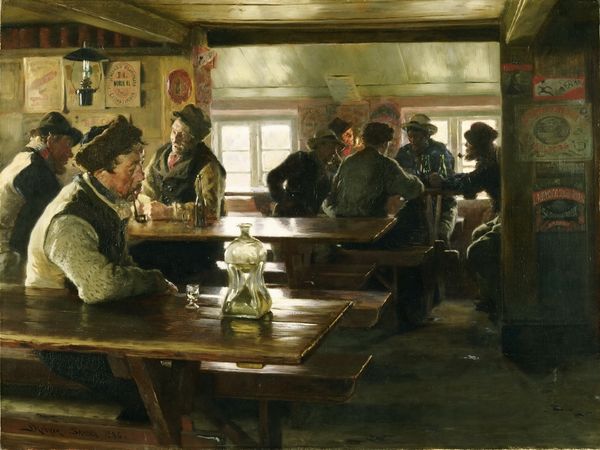
painting, oil-paint
#
figurative
#
painting
#
impressionism
#
oil-paint
#
landscape
#
painted
#
figuration
#
oil painting
#
genre-painting
#
academic-art
#
watercolor
#
realism
Copyright: Public Domain: Artvee
Curator: Winslow Homer’s 1871 oil on canvas, “The Country School,” presents a seemingly simple scene. Immediately, I’m drawn to the raw timber floors and simple, functional desks - materials telling of the area's economic circumstances, likely post-Civil War constraints influencing its very structure. Editor: Yes, and that austerity underscores a broader theme: the essential role of education, particularly for young women in shaping postwar American society. The image portrays the young female teacher standing at the desk as a figure of promise, an investment in a future struggling to redefine itself. The demographics of labor and access to educational opportunity were very unevenly distributed. Curator: Consider also the tangible construction, those hewn benches and window frames – the evidence of human labor shaping the material environment and thus forming character as much as the teacher. We understand through the visible hand of work and its limitations that learning isn’t simply imparted from on high but is made to happen by communities, even out of meagre resources. Editor: Absolutely. This isn’t just a schoolroom; it’s a social space deeply implicated in the project of nation-building, of integrating disparate experiences after such divisive conflict. It also brings to mind how gendered labor roles were evolving: Women were increasingly taking on roles as educators, simultaneously challenging and reinforcing traditional hierarchies. Notice also the range of ages—indicating likely combined classrooms due to funding scarcity. Curator: Note too how Homer deployed his paints. The thinness in application, visible wood grain under layers—these weren’t merely pictorial devices, these suggest frugality, even haste in creation dictated by the marketplace. Did this reflect changing perceptions about what "art" ought to look like given democratized subject matter? Editor: Good point. One could further analyze how the physical layout promotes both learning and discipline, fostering conformity within this developing generation. The windows' access to landscapes beyond acts as a potent symbol too—hinting at aspirations extending beyond those walls, however restricted. Curator: Precisely! The limitations within—rough carpentry, frugal paint handling—create that much greater impact regarding what lay potentially beyond them: possibilities, even for disruption. Editor: Reflecting upon it now, that careful composition combined with Homer’s deliberate choice of subject matter raises so many questions. What did it mean to represent rural education at this moment? Curator: Indeed. I find my eye still drawn back to the texture of those floors. All this discussion shows why understanding craft and method reveals insights beyond merely aesthetics.
Comments
No comments
Be the first to comment and join the conversation on the ultimate creative platform.

